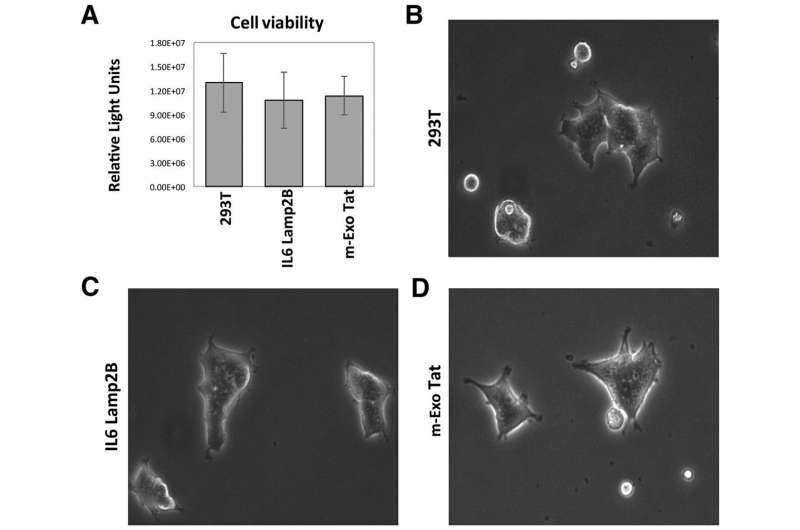Impact of exosomal HIV-1 Tat expression on the human cellular proteome

The cover for issue 54 of Oncotarget features Figure 2, "Comparative proteomic profiling of the peptides/proteins identified from 293T, IL16lamp2b and mExo-Tat samples," by Lu, et al.
The HIV-1 Tat protein is a potent activator of viral transcription.
The researcher's previous work has demonstrated that exosomal formulations of Tat can reverse HIV-1 latency in primary CD4+ T lymphocytes isolated from long term antiretroviral treated individuals suggesting a potential role for Tat as a therapeutic HIV-1 Latency Reversal Agent.
Gene ontology and pathway analysis of these differentially expressed proteins showed enrichment of extracellular vesicular exosome and spliceosome localized proteins and proteins involved with transcriptional and translational mechanisms.
Their work suggests that HIV-1 Tat expression leads to perturbations in cellular protein expression.
Dr. Nagib Ahsan and Dr. Bharat Ramratnam said, "The HIV-1 Tat protein is a transcription factor with 86 or 101 residues (depending on subtype) that is essential for trans-activating transcription of the HIV-1 viral genome"
The HIV-1 Tat protein is a transcription factor with 86 or 101 residues that is essential for trans-activating transcription of the HIV-1 viral genome.
Tat acts by binding to TAR, a structured region in the nascent transcript, and recruits positive transcriptional elongation factor B complex to the HIV-1 LTR promoter to enhance processive transcription by stimulating the elongation of prematurely terminated transcripts.
When treated with SMX-SA, HIV-1 Tat expression in Jurkat cells induced greater level of oxidative stress than the control cell lines by altering the activity of cellular proteins required for homeostasis.
Tat treatment of mouse primary glia cells leads to the up-regulation of mi RNA-341 which in turn leads to the down regulation of target protein NLRC5 that regulates the NFk B signaling network.
Using the SIV model, investigators have found that uncontrolled viral replication leads to HIV-1 Tat mediated activation of FOXO3 which in turn leads to the down regulation of anti-apoptosis proteins such as gene B-cell lymphoma 2 and up-regulation of the pro-apoptosis gene Bcl-2-like 11.
The Ahsan/Bharat research team concluded, "Our comparative proteomic results point to wide perturbations in cellular processes such as the transcriptional and translational machinery and protein targeting. As expected, known-Tat interacting proteins were identified."
More information: Impact of exosomal HIV-1 Tat expression on the human cellular proteome, Oncotarget (2019). DOI: 10.18632/oncotarget.27207




















